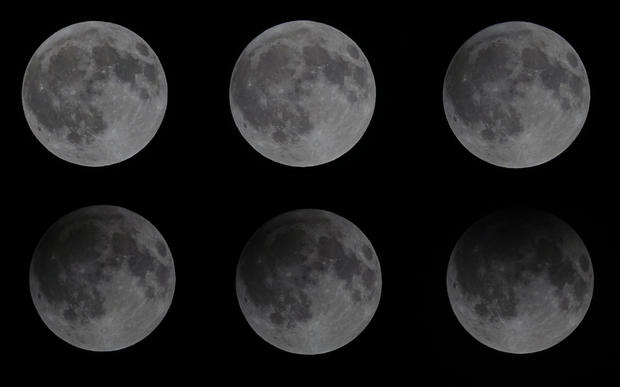How to see the penumbral lunar eclipse, March's full Worm Moon
Astronomy fans can check out a unique Worm Moon this month as March's full moon rises during a penumbral lunar eclipse.
March's full moon will reach peak illumination at 1 a.m. ET on Monday, but it will appear full through Tuesday morning, according to NASA. The Old Farmer's Almanac details specific moonrise times for different ZIP codes across the United States.
As the full moon rises during the late evening of March 24 into the early morning hours of March 25, it will travel through the Earth's penumbra — the faint outer part of its shadow — creating a penumbral eclipse.
What is a penumbral eclipse and where will it be visible?
The penumbral eclipse is one of three different types of lunar eclipses. There's also the total lunar eclipse and the partial lunar eclipse.
The penumbral lunar eclipse will be visible to all of North and South America, according to NASA. It's easy to miss if you don't know it's happening.
During the eclipse, the moon will dim very slightly for a few nighttime hours. The moon will start entering the Earth's shadow at 12:53 a.m. ET. It will reach the point of greatest eclipse at 3:13 a.m, with 96% of the moon in partial shadow. The moon will exit the shadow at 5:32 a.m.
The next lunar eclipse, a partial eclipse, will take place on Sept. 18. It will be visible in parts of the Americas, Europe and Africa. Astronomy fans won't see a total lunar eclipse until March of next year.
Why is March's full moon known as a Worm Moon?
Full moon names often come from seasons, historical crops and the behavior of certain animals. The "Worm Moon" moniker may have come from the earthworms typically found as spring nears, according to The Old Farmer's Almanac. The name may also refer to worms, or beetle larvae, coming out from bark as trees thaw from the winter.
March's full moon also goes by several other names referring to animals, including the Eagle Moon, Goose Moon and the Crow Comes Back Moon. It's also known as the Sugar Moon, the Wind Strong Moon and the Sore Eyes Moon.
This year, March's full moon is also known as the Paschal Full Moon because it will be the first full moon of spring.
Look up — what else can you see in the sky this spring?
April will feature one of the most hotly anticipated events of the year — April 8's total solar eclipse. The month also includes the Lyrid meteor shower, which will peak between April 21 and 22. Right after that, April's full moon, known as the Pink Moon, will reach peak illumination on April 23.
May's full moon, the Flower Moon, reaches peak illumination on May 23.




